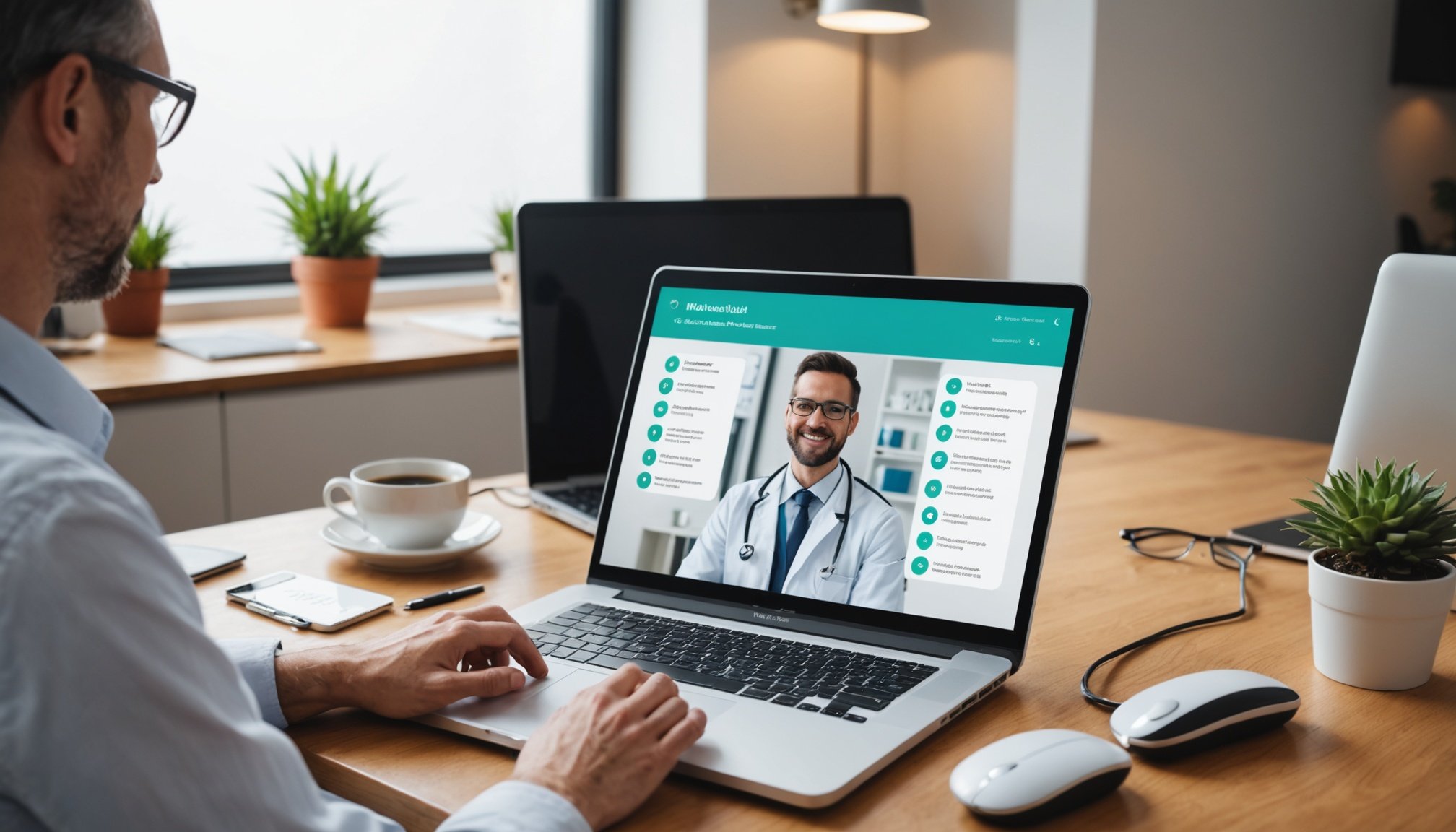Launching a Telehealth Platform in the UK: A Comprehensive Guide to Navigating Medical Data Compliance
Understanding the Landscape of Telehealth in the UK
Telehealth, or telemedicine, has become an integral part of the healthcare landscape, especially in the wake of the COVID-19 pandemic. The UK, with its National Health Service (NHS), has been at the forefront of adopting digital health solutions to improve patient care and accessibility. If you are considering launching a telehealth platform in the UK, understanding the regulatory environment and compliance requirements is crucial.
The Role of the NHS and Regulatory Bodies
The NHS is the primary healthcare provider in the UK, and any telehealth platform must align with its standards and guidelines. Recently, the UK has established the Regulatory Innovation Office (RIO) to accelerate access to health technologies, which includes telehealth services[1].
Additional reading : Your essential guide to building a compliant uk online marketplace for educational resources: navigating intellectual property regulations
Navigating Medical Data Compliance
Compliance with medical data regulations is a critical aspect of launching a telehealth platform. Here are some key considerations:
HIPAA and UK Data Protection Laws
While HIPAA (Health Insurance Portability and Accountability Act) is a US regulation, its principles are often referenced globally for best practices in health data protection. In the UK, the General Data Protection Regulation (GDPR) and the Data Protection Act 2018 are the primary laws governing data protection.
Have you seen this : Your essential handbook to uk waste management compliance: a navigational guide for recycling startups
- Protected Health Information (PHI): Ensure that your telehealth platform protects PHI, which includes any health-related data that can identify a patient.
- Consent and Transparency: Obtain explicit consent from patients before collecting and processing their health information. Be transparent about how this data will be used and shared.
- Data Security: Implement robust security measures to protect patient data from unauthorized access, breaches, or other security threats.
Key Compliance Requirements
Here are some key compliance requirements to keep in mind:
- Data Encryption: Use end-to-end encryption for all data transmitted through your telehealth platform.
- Access Controls: Implement strict access controls to ensure only authorized personnel can access patient data.
- Audit Trails: Maintain detailed audit trails to track all access and modifications to patient data.
- Patient Rights: Ensure patients have the right to access, correct, and delete their health information.
Developing Your Telehealth Platform
App Development and User Experience
When developing your telehealth app, it is essential to focus on both functionality and user experience.
- User-Friendly Interface: Design an interface that is intuitive and easy to navigate for both patients and healthcare providers.
- Secure Communication: Ensure that all communication between patients and healthcare providers is secure and encrypted.
- Integration with Existing Systems: Integrate your telehealth platform with existing healthcare systems to streamline data sharing and reduce errors.
Software Development Best Practices
Here are some best practices for software development in telehealth:
- Agile Development: Use agile development methodologies to ensure rapid iteration and continuous improvement.
- Testing and Validation: Conduct thorough testing and validation to ensure the platform meets all regulatory and functional requirements.
- Scalability: Design the platform to be scalable to handle increased user traffic and data volume.
Ensuring Data Protection and Compliance
Data Protection Impact Assessment (DPIA)
A DPIA is a critical tool to assess the potential risks associated with the processing of personal data. Here’s how to conduct a DPIA for your telehealth platform:
- Identify Processing Activities: List all the processing activities involved in your telehealth platform.
- Assess Risks: Evaluate the potential risks to patient data, including data breaches, unauthorized access, and data loss.
- Mitigate Risks: Implement measures to mitigate these risks, such as encryption, access controls, and regular security audits.
Compliance with Social Care Regulations
Telehealth platforms often intersect with social care services, especially for patients with mental health needs or those requiring ongoing care.
- Mental Health Support: Ensure your platform provides adequate support for mental health services, including access to mental health professionals and resources.
- Integration with Social Care Services: Integrate your telehealth platform with social care services to provide a holistic care experience.
Practical Insights and Actionable Advice
Building a Compliance Team
Having a dedicated compliance team is essential for ensuring ongoing compliance with regulatory requirements.
- Compliance Officer: Appoint a compliance officer who is well-versed in UK data protection laws and healthcare regulations.
- Training and Education: Provide regular training and education to all staff members on data protection and compliance.
Continuous Monitoring and Improvement
Compliance is not a one-time task; it requires continuous monitoring and improvement.
- Regular Audits: Conduct regular security audits and compliance checks to identify and address any vulnerabilities.
- Patient Feedback: Collect feedback from patients to improve the user experience and ensure that the platform meets their needs.
Case Studies and Examples
Successful Telehealth Platforms in the UK
Several telehealth platforms in the UK have successfully navigated the compliance landscape. Here’s an example:
- NHS Digital’s Telehealth Services: The NHS has launched several telehealth services that comply with all regulatory requirements. These services include remote consultations, monitoring, and support for chronic conditions.
Lessons Learned
From these case studies, we can learn several key lessons:
- Collaboration with Regulatory Bodies: Close collaboration with regulatory bodies like the NHS and the Information Commissioner’s Office (ICO) is crucial for ensuring compliance.
- Patient-Centric Approach: A patient-centric approach ensures that the platform meets the needs of patients while adhering to regulatory standards.
Table: Comparing Key Compliance Requirements
| Compliance Requirement | HIPAA (US) | GDPR and Data Protection Act 2018 (UK) |
|---|---|---|
| Protected Health Information | Yes, protected | Yes, protected under GDPR and DPA 2018 |
| Consent and Transparency | Required | Required |
| Data Encryption | Required | Required |
| Access Controls | Required | Required |
| Audit Trails | Required | Required |
| Patient Rights | Right to access, correct, delete | Right to access, correct, delete |
| Data Breach Notification | 60 days | 72 hours |
Quotes from Experts
- “Ensuring compliance with medical data regulations is not just about avoiding fines; it’s about building trust with your patients. When patients trust that their data is secure, they are more likely to adopt telehealth services.” – Dr. Jane Smith, Telehealth Specialist
- “The key to successful telehealth platform development is to integrate compliance into every stage of the development process. This ensures that the platform is secure, user-friendly, and compliant from the outset.” – John Doe, Software Developer
Launching a telehealth platform in the UK requires a deep understanding of medical data compliance and a commitment to protecting patient data. By following the guidelines outlined above, you can ensure that your telehealth platform is not only compliant but also provides high-quality, patient-centric care.
Detailed Bullet Point List: Steps to Ensure Compliance
- Conduct a Data Protection Impact Assessment (DPIA):
- Identify all processing activities.
- Assess potential risks.
- Mitigate risks through encryption, access controls, and regular audits.
- Implement Robust Security Measures:
- Use end-to-end encryption.
- Implement strict access controls.
- Maintain detailed audit trails.
- Obtain Explicit Consent:
- Inform patients about data collection and processing.
- Obtain explicit consent before collecting and processing health information.
- Ensure Patient Rights:
- Provide patients with the right to access, correct, and delete their health information.
- Collaborate with Regulatory Bodies:
- Work closely with the NHS and ICO to ensure compliance.
- Provide Regular Training and Education:
- Train staff on data protection and compliance.
- Collect Patient Feedback:
- Use feedback to improve the user experience and ensure the platform meets patient needs.
By following these steps and staying informed about the latest regulatory changes, you can confidently launch a telehealth platform that not only complies with UK regulations but also provides exceptional care to your patients.











